Analogue Controls
This is the system which has been used for many years and is proberly what you currently have if you already have a model railway. It is where a variable DC output controller feeds any voltage from 0 to 12 volts direct to the track. As the voltage is increased the speed increases. When the polarity (+ & -) is reversed the train runs in reverse.
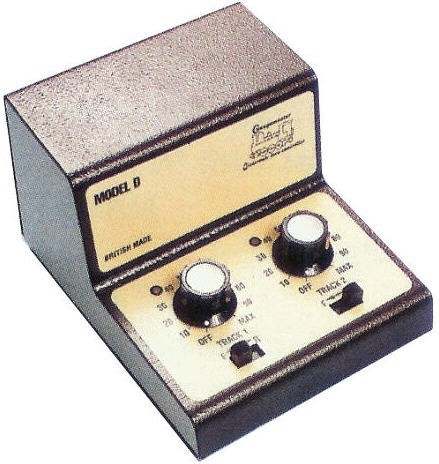
The two controllers shown here are both analogue designed to control two tracks.
Both are self contained units which plug into the normal household supply via a mains lead.
The wires to each track are connected to the rear of the units and run under or across the base board to the tracks and are ideal when you have two tracks having one running clockwise and the other counter clockwise.
The one on the left is from Gaugemaster and the one below is from Hornby.
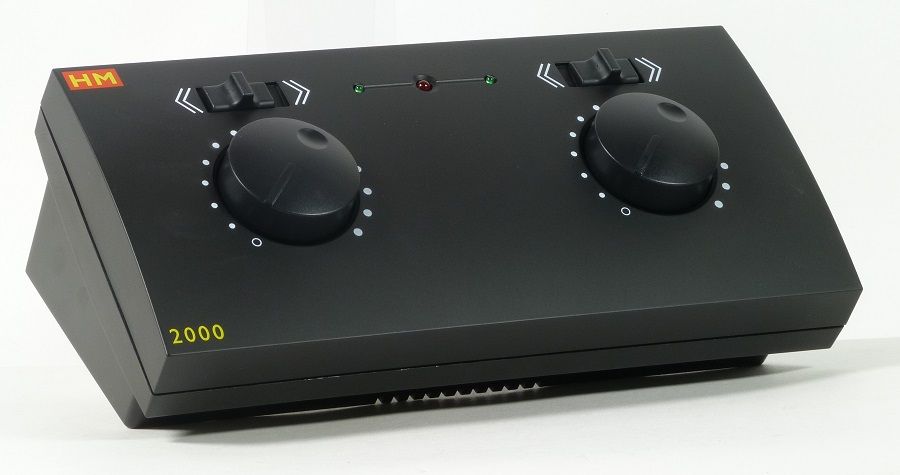
Advantages of DC Analogue
Any locomotive will run on this system
Locomotives do not require a DCC chip
Dis-advantages of DC Analogue
If more than on loco is on the same track they both run
a large amount of wiring & switches are required for run several locos on the layout
Digital Controls
This system known as DCC (Digital Command Control) has been available for several years now and is proving popular but again does not suit everybody who has already got a model railway. The track has a 16 volt AC supply all the time and the control system address each loco via a chip fitted in each loco. It is the chip in each loco which feeds any voltage from 0 to 12 volts direct to the motor in the loco.
One major difference between analogue and digital is because DCC loco run on a constant 16volts AC ALL TRACKS MUST BE FEED WITH 16 VOLTS AC. All running tracks must be wired together to ensure where ever the loco is on the layout when the DCC controller tries to ‘address’ the chips in all loco’s only the one with the number you ‘addressed’ will move. All the others will not move because they have a different code number.
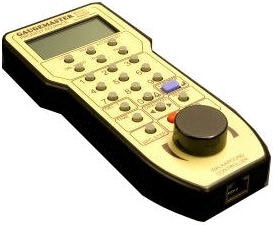
Both of these are digital controllers, known as DDC controllers.
The one on the left is from Gaugemaster and the one on the right is from Hornby.
Both units connect to the track with a only two wires because as it is digital control the controller controls each locomotive via the track and not the track alone.
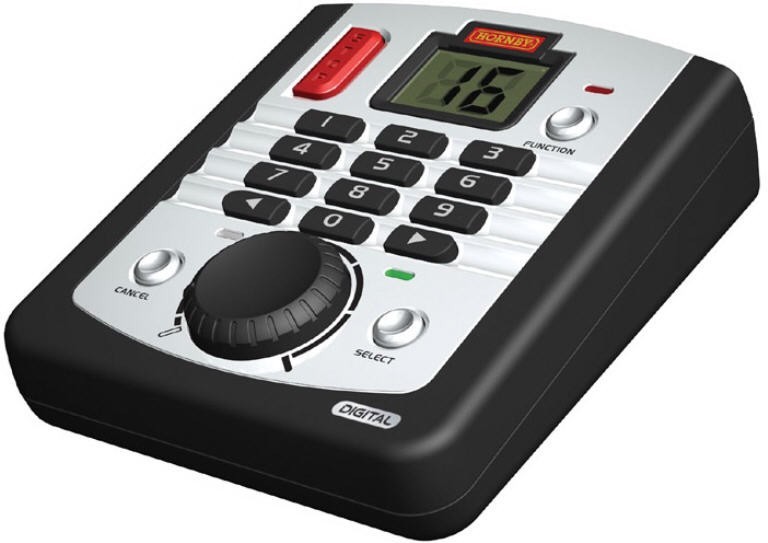
Advantages of DCC
a single loco can be controlled without effecting other locos on the same track
Wiring is to the minimum as all tracks are wired in parallel
the wonderful feature of sound on-board locos
lights stay on even when the train stops
Disadvantages of DCC
all loco must be fitted with a DCC chip
additional cost of chips for each loco
older locos have to be modified
high frequency track cleaners must not be used when DCC is used.
See warning on left in yellow panel.

WARNING
Do not wire in an electronic track cleaner such as the Gaugemaster HF1 or HF2 as these will burn out any chips fitted to locomotives
Ensure that any track feeds are connected direct to the track and there are no capacitors fitted within the track power clip as supplied by Hornby. Hornby do offer an alternative which does not have the capacitor fitted.
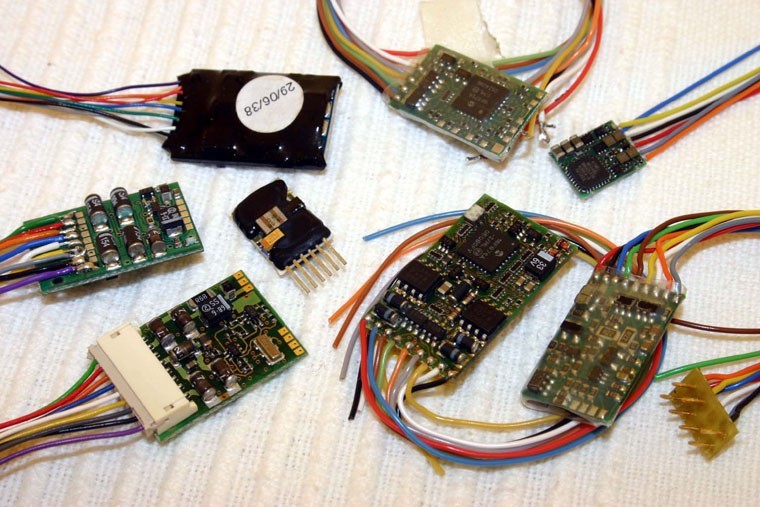
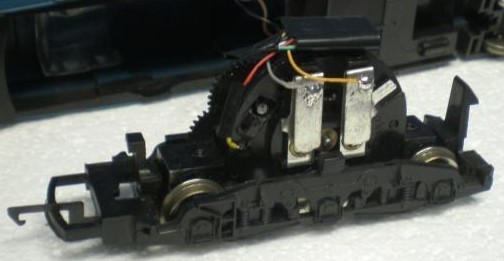
Each locomotive requires a decoder fitted inside its body and wired between the track pick-ups and the motor connection so the motor is never connected directly between track and motor.
The decoders (known as ‘chips’) come in different sizes and are connected to the locomotive by thin colour coded wires. Two wires to the track pick-ups and two wires to the motor. As well as the track pick-up and motor connections there are also function wires to supply features like lighting.
Most come with an eight pin plug which plugs into the loco eight way socket if the loco is DCC ready. If not DCC ready the plug is removed and the wires soldered directly to the connections on the loco. The image on the left is an example of a decoder fitted to a Hornby ringfield power bogie.

If you plan to have a return loop where the train runs round a loop and returns back down the same track (see image on right) and you are using DCC controls this is a very useful piece of equipment made by Hornby part code R8238 seen on left.
Other makes are available so ask in your local model shop or go ‘on-line’
